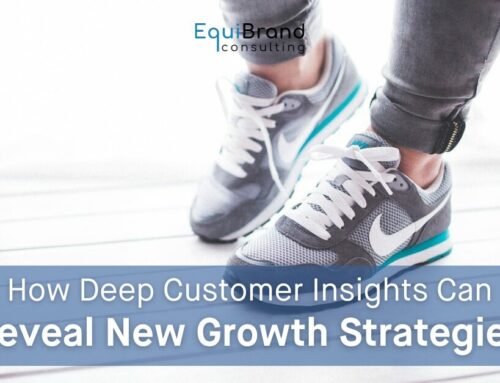EVER EAT PANCAKES AT HOME?
If so, do you make them from scratch, use a mix, or eat the frozen kind?
Does adding water to the mix constitute baking? How about adding an egg?
We set out to answer these and other questions for a client looking to grow their business through upstream marketing.
A Case Study in Marketing
We conducted an engagement for a client that manufactures baking mixes for pancakes, waffles, cakes, muffins, and other products. Growth had stalled due to changes in consumer eating habits, increased competition, new product failures, and a lack of consumer insight.
The challenge?
Stimulate growth by:
- segmenting the market
- solidifying the brand positioning
- identifying new products
It was a classic case of deciding where to play, and how to win – two types of customer insight used in the upstream framework.
Use the 3-C’s Analysis
We began the project by conducting internal interviews and performing a three C’s analysis to confirm the situation and identify learning gaps. The three C’s of insight are easy to remember:
- Consumers
- Company
- Competitors
This involved reviewing consumer trends—including their desire for convenience, portability, and flavor variety—and obtaining brand-specific insight.
In the process, we also developed a four-part research plan to learn from consumers.

Here’s an overview of each type of insight gathered and the client issues that were addressed.
Exploratory Insight into Consumer & Category
Exploratory insight helps explain and frame key aspects of the consumer and category.
This insight is foundational and plays a role in segmenting the market to:
- Uncover customer needs
- Establish customer journey maps
- Identify potential new market spaces
The focus is on understanding the whats and whys – and the questioning starts broad:
What are customer needs, motivations, attitudes, and friction points?
The focus then narrows in on potential solutions. Methods for exploratory insight include:
- In-depth customer interviews
- Digital diaries
- Ethnographic research
With our baking mix client, we explored different types of cooking (from scratch, mixes, and other options) and how consumers viewed various solutions.
Since our client positioned its brand relative to homemade baking (“homemade made easy”), including the “just add water” product claim, we needed to understand from consumers:
- How do you define homemade?
- Does adding ingredients change your view?
Like most categories, the answers varied by the consumers, providing insight into segmentation opportunities.
Segmentation Insight Splits Consumers into Groups
Segmentation insight splits consumers into different groups based on their attitudes, motivations, and needs. This understanding is obtained both qualitatively and quantitatively. It informs customer framework development and portfolio management opportunities.
This structure allowed us to put stakes in the ground and avoid “boiling the ocean.”
Based on the exploratory research, we identified four “to whom” segments, breaking out 100 hypothetical consumers into four groups:
- Homemade bakers who like to cook from scratch. They’re willing to invest time and effort, believing that baking with mixes is basic and boring, even causing them a little guilt.
- Mix enthusiasts who also love to cook, and view baking mixes as a way to save time.
- Reluctant bakers who don’t enjoy baking, but do it because of a perceived obligation to their kids and family.
- Baking avoiders who rarely bake, because they consider it a hassle. They prefer to eat ready-to-eat or frozen baked goods.
Next, we developed a hypothesized framework for greater precision, which we will discuss in Part 2 of Growing a Business With Upstream Marketing, here.
The Hypothesized Demand Framework
Drawing on our hypothesized demand framework, we then created an online survey. Through statistical analysis, a fifth consumer group emerged that divided mix users into two distinct groups:
- Enthusiastic baker segment
- A slightly guilty mix user
We also tested and identified several “for what” need states within the baking category.
For example, one need related to breakfast and getting family members up and out the door during the week (a great fit for frozen, microwavable, and portable breakfast items).
Another need related to “big breakfast” occasions where baking from scratch or mixes offered an element of sociability. This often occurred on weekends.
Grow Your Business by Gaining Customer Insight
Mapping the to-whom consumer segments with the for-what need states yielded distinct strategic opportunity areas, including several new demand spaces. This helped us obtain insight on new product solutions using Concept Optimization REsearch (CORE) and also to complete the final step, validation insight, which we will cover in a later blog.
Would you like to learn more about gaining customer insight and growing your business using the upstream marketing framework? Great! We’re pleased to offer a free full download of chapter 2 of our book “Upstream Marketing” here.


















Follow EquiBrand